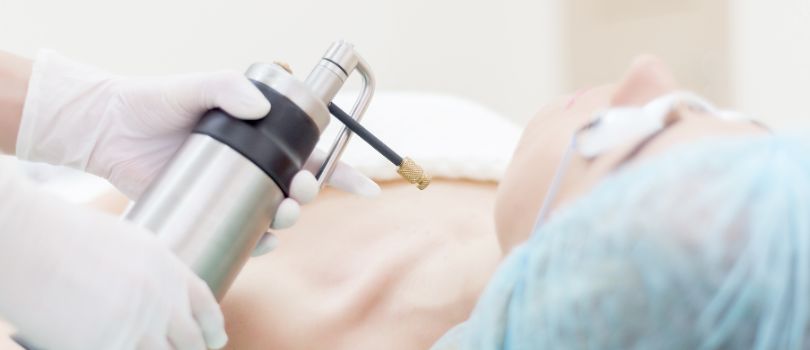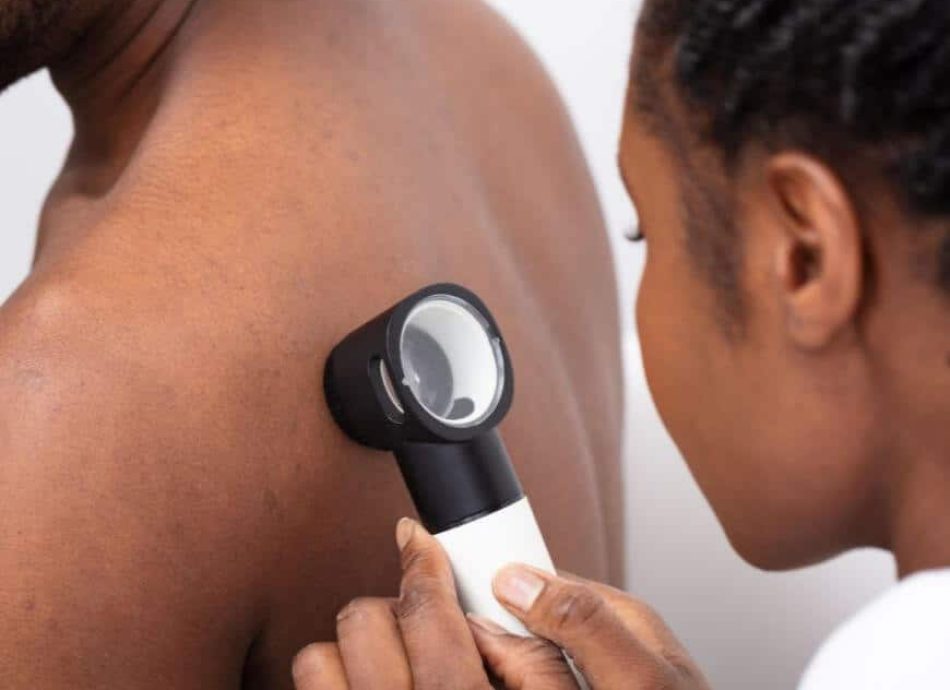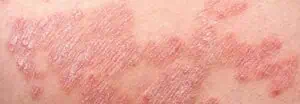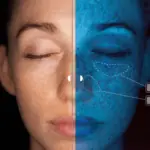Cryotherapy
Home » Treatments » Cryotherapy
Award winning dermatology service, with over 20 years on experience
Short waiting lists, on some occasions offering same week appointments
Safe environment, in Care Quality Commission approved facilities
Conditions we treat
- Actinic Keratoses
- Freckles and Solar Lentigos
- Warts & Verrucas
- Skin Tags
- Psoriasis
- Seborrhoeic Keratosis
- Sabaceous Lesions
- Cherry Angioma
Cryotherapy in Oxford, Wimbledon and Cheltenham
What is Cryotherapy?
Cryotherapy is a minimally invasive treatment where the body or specific areas are exposed to extremely cold temperatures for a short duration. This method is widely recognised for its ability to reduce inflammation and pain, improve circulation, and promote tissue healing. When the skin is subjected to the cold, it sends signals to the brain, activating the body’s regulatory functions. Blood vessels constrict, redirecting blood towards the vital organs, where it becomes oxygenated and enriched with nutrients. During this process, the body also releases anti-inflammatory molecules, endorphins, and toxins. Once the body transitions to a warmer state, blood vessels expand, allowing nutrient-rich blood to flow back into the tissues. This not only flushes out inflammation but also promotes repair and recovery. Cryotherapy’s efficiency and minimal downtime make it a favoured choice for addressing damaged or diseased tissue.

WHAT IS cryotherapy USED FOR?
Cryotherapy can help treat the following conditions:
Cryotherapy is an effective treatment for precancerous skin lesions known as actinic keratoses. This method works by destroying abnormal cells and promoting the growth of healthy new skin.
Freckles and solar lentigos can be treated through cryotherapy, a quick and virtually painless procedure in which liquid nitrogen freezes the lesion.
Cryotherapy is a tried-and-tested solution for removing warts and verrucas. Liquid nitrogen is applied to freeze the wart, causing it to die and eventually fall off.
Cryotherapy is also suitable for removing skin tags. The process involves applying liquid nitrogen directly to the skin tag, freezing and destroying the affected tissue.
While not a cure, cryotherapy can provide temporary relief from the symptoms of psoriasis by helping to reduce inflammation and itchiness.
Seborrhoeic Keratosis
Cryotherapy is an effective treatment for seborrhoeic keratosis, a common, benign skin growth that often appears as a raised, rough, or waxy patch on the skin. During the procedure, liquid nitrogen is applied directly to the lesion, freezing the abnormal skin cells.
Sebaceous Lesions
Cryotherapy is a useful treatment option for certain sebaceous lesions. The cold destroys the targeted tissue, causing it to shrink, dry up, and eventually fall off. This method is quick, minimally invasive, and with little to no downtime.
Cherry Angiomas
While cherry angiomas are harmless and painless, they may bleed if scratched or may be removed for cosmetic reasons.
FREQUENTLY ASKED QUESTIONS
HOW TO SPEED UP HEALING FROM CRYOTHERAPY?
To speed up healing after cryotherapy, keep the area clean and dry, and avoid picking or scratching. You may cover the area with a sterile bandage if needed, and should avoid sun exposure, using SPF to prevent pigmentation. Most areas heal within 7–14 days, but follow your doctors aftercare advice and seek medical attention if you notice signs of infection.
WHAT ARE CRYOTHERAPY'S SIDE EFFECTS?
Cryotherapy may cause some pain or discomfort during or after the procedure. It’s common for the treated area to become red, swollen, or blistered—this is a normal part of the healing process and typically resolves within a few days. In rare cases, cryotherapy can lead to scarring, particularly when treating larger or deeper areas. Changes in skin pigmentation can also occur, with the area becoming lighter or darker than the surrounding skin, especially in individuals with darker skin tones. While infection is uncommon, it is a potential risk, so it’s important to keep the area clean and dry as it heals. Your dermatologist will discuss all potential risks and benefits with you before starting treatment.
HOW MANY CRYOTHERAPY SESSION ARE REQUIRED?
It is possible to get benefits from just one cryotherapy session, but the most effective is when used regularly. Our team of specialist dermatologists can provide guidance on the best treatment approach.
HOW SHOULD I PREPARE FOR CRYOTHERAPY?
REQUEST A CALL BACK
Please fill in this form and one of our team will give you a call back to arrange a consultation with one of our expert dermatologists.

WHY GET CRYOTHERAPY TREATMENT AT Stratum CLinics?
Safe and effective cryotherapy treatments near you. Stratum Clinics offer cryotherapy for patients who are looking for quick and effective removal of these lesions.
We are specialists in conditions affecting the skin, hair and nails. Our goal is to provide all the care that you need when you’re experiencing these kinds of problems. We want to make it easy for you to access the best quality treatment and support
Our clinics are conveniently located in Oxford, London and Cheltenham, so it’s easy to visit us if you need to see a Dermatologist. You will find yourself in a very comfortable and welcoming environment. We have created a relaxing space where you will receive the highest quality of care. We are regulated by the Care Quality Commission, are part of the British Association of Dermatologists and are top-rated by patients of Doctify so you can be sure of safe and effective treatment with us.
latest INSIGHTS AND ADVICE

Guide to Fall Skin Conditions
Autumn, with all its stunning colours, also brings some challenges for our skin. As the air gets cooler and the leaves turn vibrant shades, it’s a reminder that we’re steadily approaching winter. Keeping your skin glowing and healthy during this transition from summer to the

Eczema Awareness Month – Complete Guide on Eczema
October is Eczema Awareness Month. For individuals living with eczema, you will be all too familiar with the trials of handling this skin complaint. It’s our mission throughout October and beyond to educate, support and empower you by delivering invaluable insights on its origin, available

Understanding Varicose Veins: Symptoms, Treatments and Prevention
Varicose Disease Awareness Month focuses on raising awareness about varicose veins, a common but often ignored condition affecting millions globally. This September, we’re highlighting the importance of early detection, available treatments and lifestyle changes to effectively manage varicose veins. By increasing awareness, we aim to
